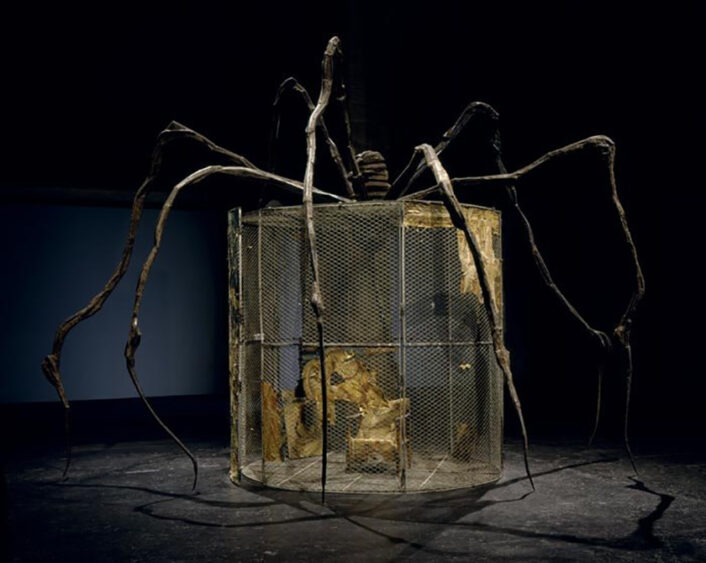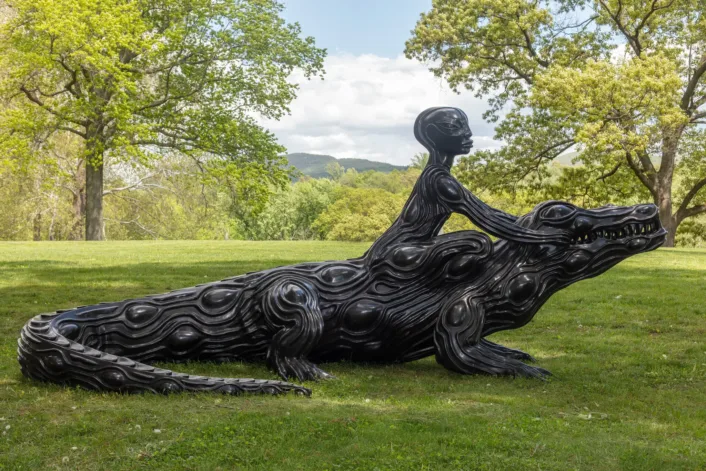Fine Art
Louise Bourgeois… and why spiders?
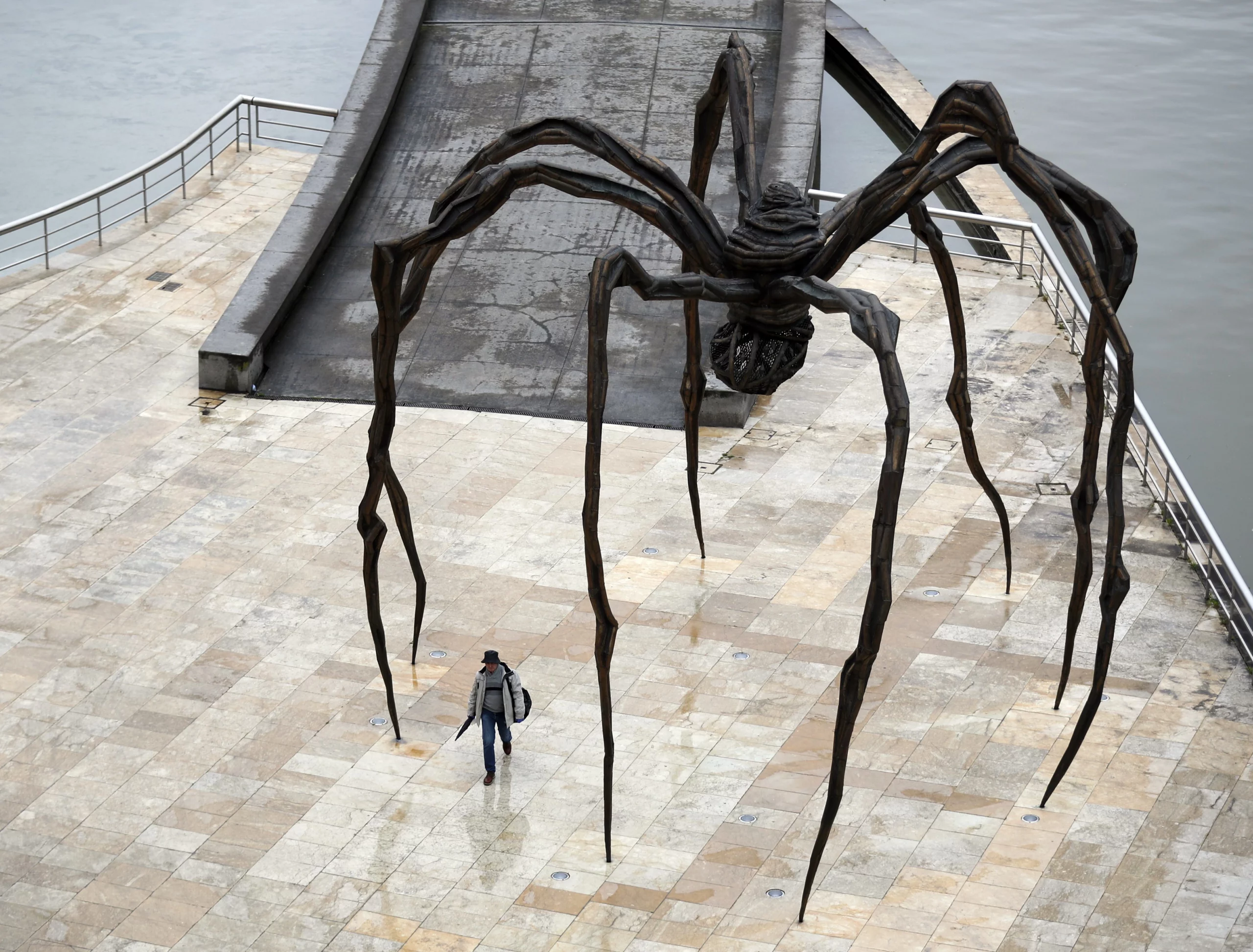
At the Guggenheim Museum in Bilbao, Spain, one of Bourgeois’ “Maman” sculptures.
Image courtesy of: ArtNews, photographed by: Luis Tejido
Louise Bourgeois is perhaps one of the most famous female artists of the 20th-century. Born in Paris, Bourgeois began sketching images of her parent’s tapestry restoration business as a child. Unfortunately, her childhood was difficult as her mother contracted influenza and remained sick for years. Bourgeois was particularly close to her mother and was scarred when she realized that her father was conducting a long-term affair with one of her own governesses.
After studying at some of Paris’ most important art schools, specifically studying mathematics and philosophy at the Sorbonne University in Paris, Bourgeois moved to New York City to study at the Art Students League. That same year, in 1938, she married Robert Goldwater, an art critic and art historian. The stable marriage was vital for Bourgeois who suffered from abandonment fears after a traumatic childhood. However, abandonment would remain a key theme in her work throughout her life, even as she took steps to heal from growing up in the backdrop of WWII, losing her mother at a young age, and witnessing her father’s infidelity.
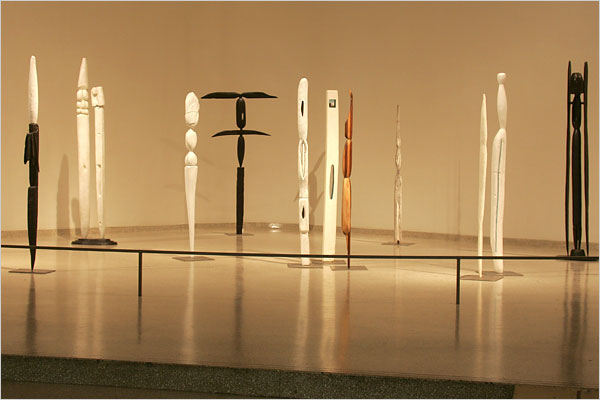
A collection of “Personages,” tall, rail-thin sculptures seemingly on their tippy-toes. Materials for these sculptures, for example construction wood, were typically found on Manhattan street corners.
Image courtesy of: The New York Times, photographed by: Suzanne DeChillo
A solo show at Peridot Gallery in New York City was Bourgeois’ first big exhibition. The exhibition featured “Personnages,” wooden sculptures that she created over a decade. The sculptures had a clear association with the era’s avant-garde art, in particular the totem-like shape. Some likened the seventeen “Personnages” to stylized images of sewing tools: needles and bobbins. As such, this was Bourgeois’ way of recognizing and honoring her parents’ careers as tapestry restorers.
In particular, Bourgeois stated that “such works served as vehicles through which she grappled with memories of people from her childhood and early life in Paris—comments that foreshadow ones she would later make about her spiders.”
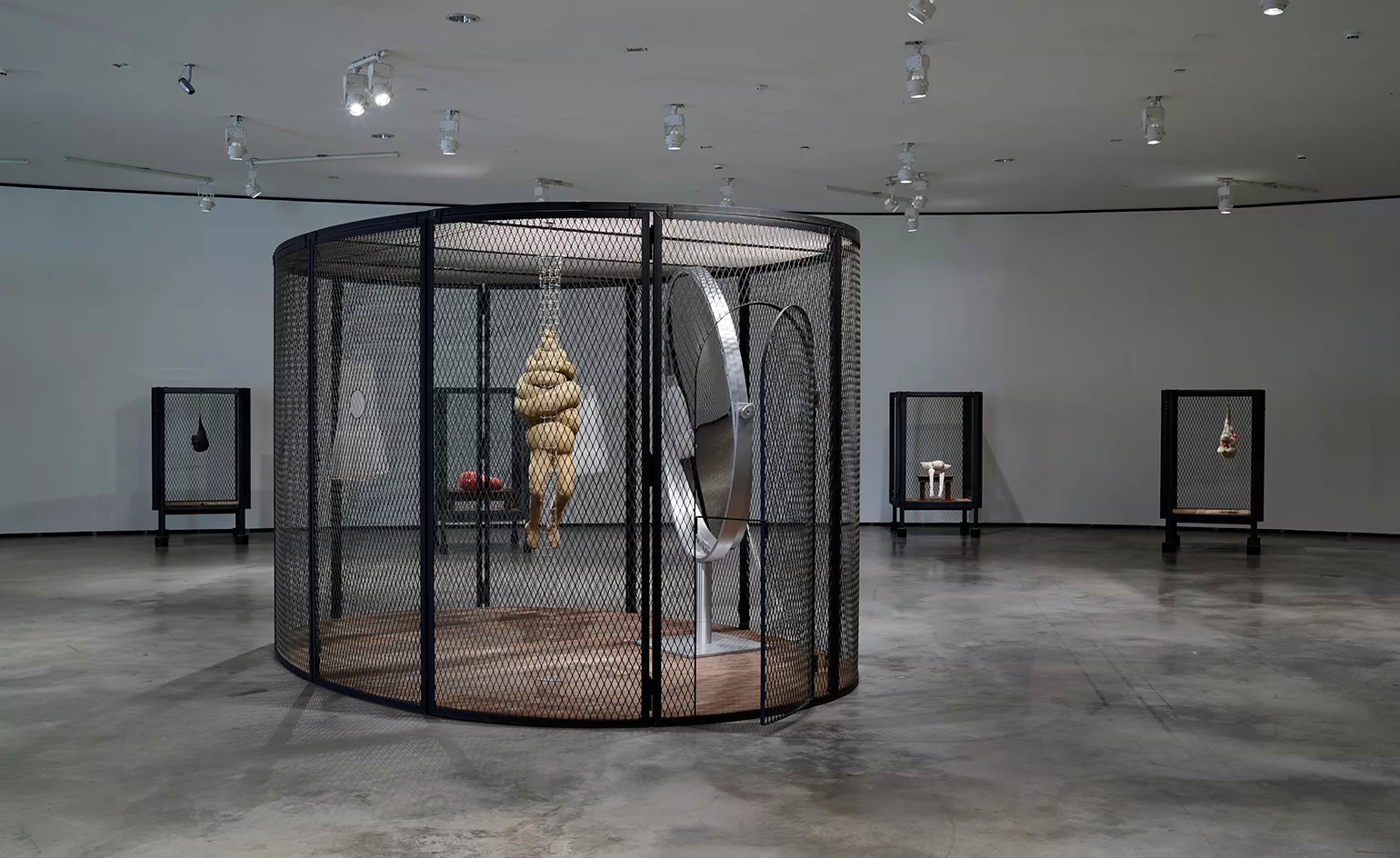
“Cell XXVI,” 2003. Featured at the Guggenheim in Bilbao, Spain.
Image courtesy of: Wallpaper Magazine
The works that followed were much larger in scale. The decade of the 60’s was essentially dedicated to the spirals that frequently appeared in Bourgeois’ sculptures. The random form was one which became a central theme in many of the artist’s sculptures, prints, and paintings… it was an artistic representation of Bourgeois’ “control and freedom.”
However it was the “Cells” series that cemented the artist’s genius. Bourgeois began creating “Cells” in 1989 as a way to explain her notion of entrapment. “She formed impenetrable barriers with her caged environments containing sculptures and sundry items like furniture, tapestries, and clothing. These psychologically fraught sculptures are meant to envision states of isolation.” The collection of sixty sculptures was a precursor to her iconic spiders.
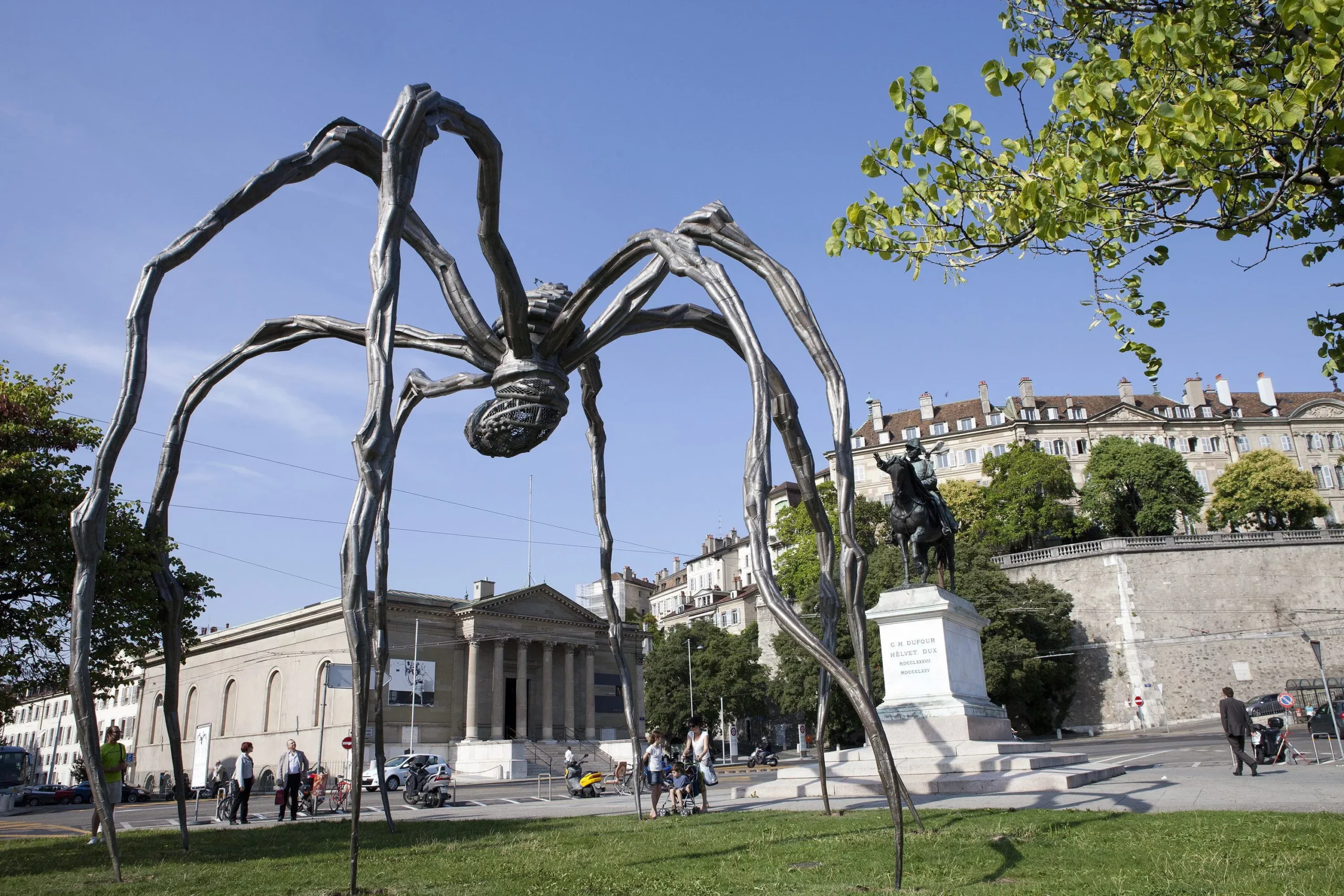
In Geneva, Switzerland, one of the six bronze case steel-work “Maman” sculptures stands guard.
Image courtesy of: ArtNews, photographed by: Salvatore Di Nolfi
Interestingly, Bourgeois only began creating her iconic spiders in the 1990s, toward the end of her career. Even though she had previously drawn spiders, as evident from two ink and charcoal drawings made in 1947, Bourgeois waited several decades to take those ideas to a monumental scale. A spider as her subject was the artist’s way of paying homage to her mother. Bourgeois saw many similarities in traits between the two. As Bourgeois stated, “She was deliberate, clever, patient, soothing, reasonable, dainty, subtle, indispensable, neat, and as useful as a spider.”
Most of the spiders were monumental in size, allowing visitors to navigate around and between the arachnid’s eight dangly legs and look up at the elegant body. For “Maman” in particular, which was created for the Tate Modern’s grand opening in 2000, peering up showcases a sac of 26 marble eggs. True to form, “Maman” is truly a mother figure.
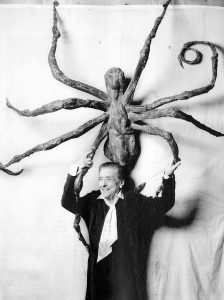
Louise Bourgeois in front of “Spider IV,” 1996.
Image courtesy of: Crystal Bridges Museum of American Art, photographed by: Peter Bellamy
The first spiders were enormous; however soon thereafter, Bourgeois began creating spiders in many different sizes. Critics often associated spiders as the artist’s most significant body of work… an exploration into Bourgeois’ emotions, psychological state, and the complexities of familial relations.
Rather than being scary, Bourgeois’ spiders were meant to be a comfort. The Collector’s quote from the artist is most telling, “The Spider is an ode to my mother. She was my best friend. Like a spider, my mother was a weaver. My family was in the business of tapestry restoration, and my mother was in charge of the workshop. Like spiders, my mother was very clever. Spiders are friendly presences that eat mosquitoes. We know that mosquitoes spread diseases and are therefore unwanted. So, spiders are helpful and protective, just like my mother.” Enough said.
